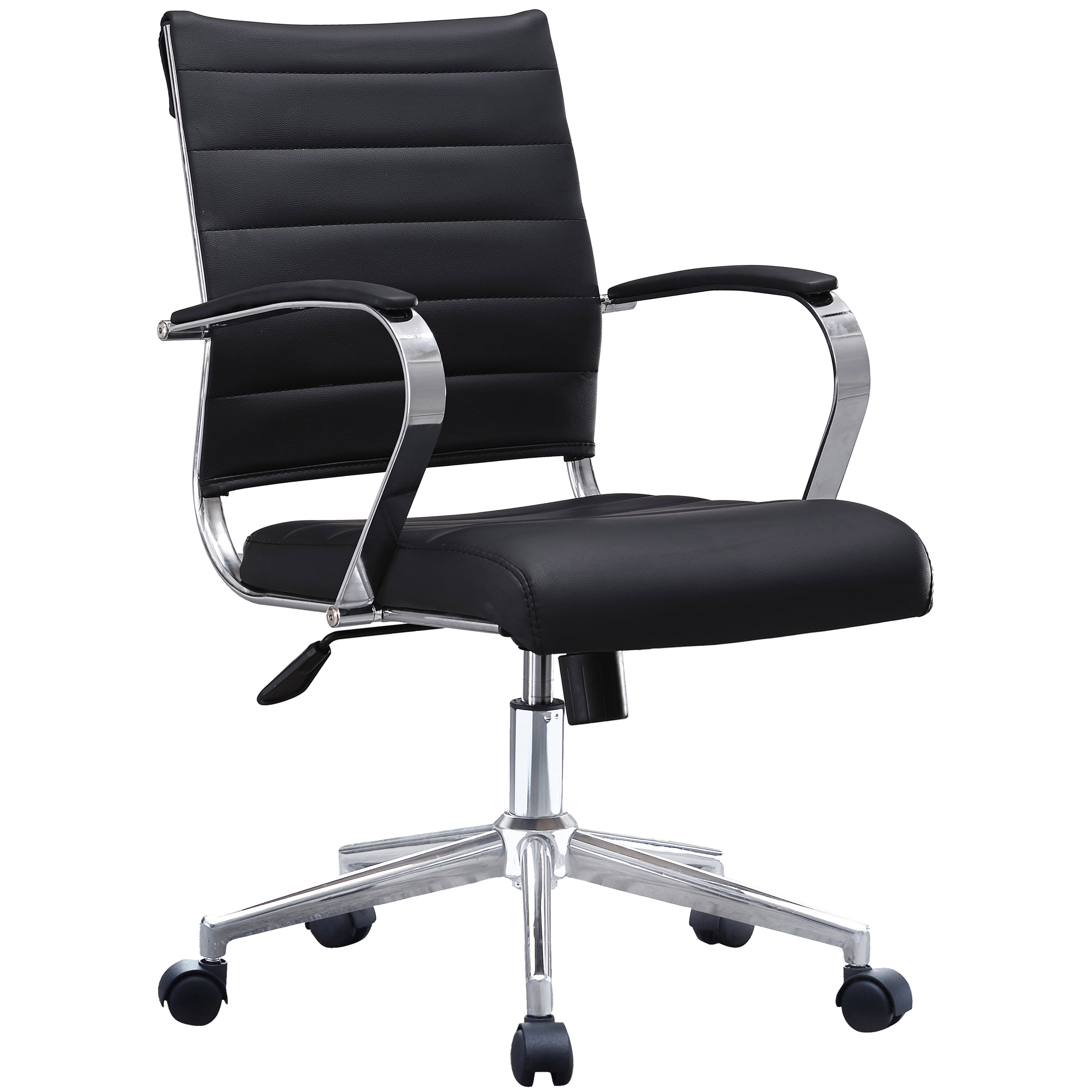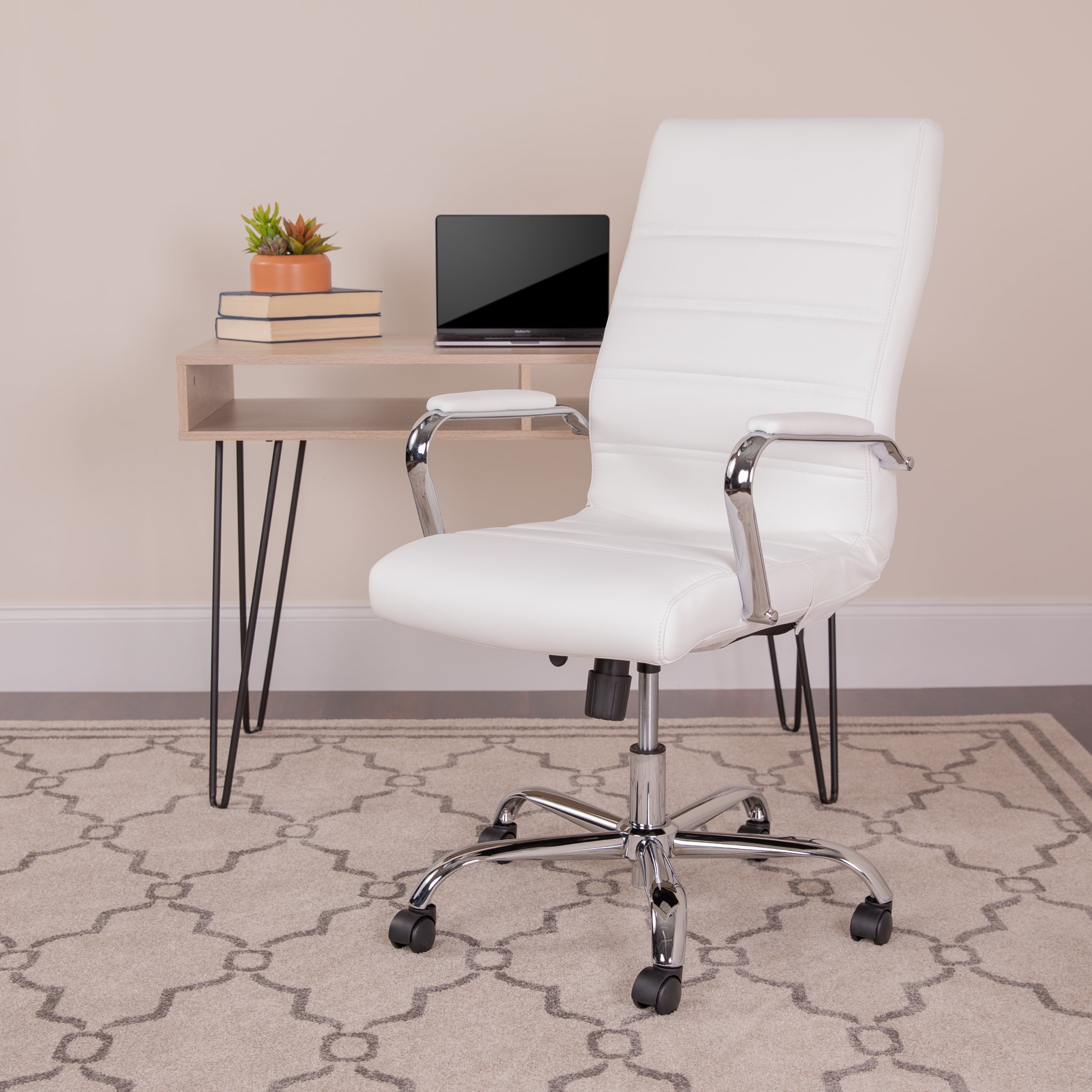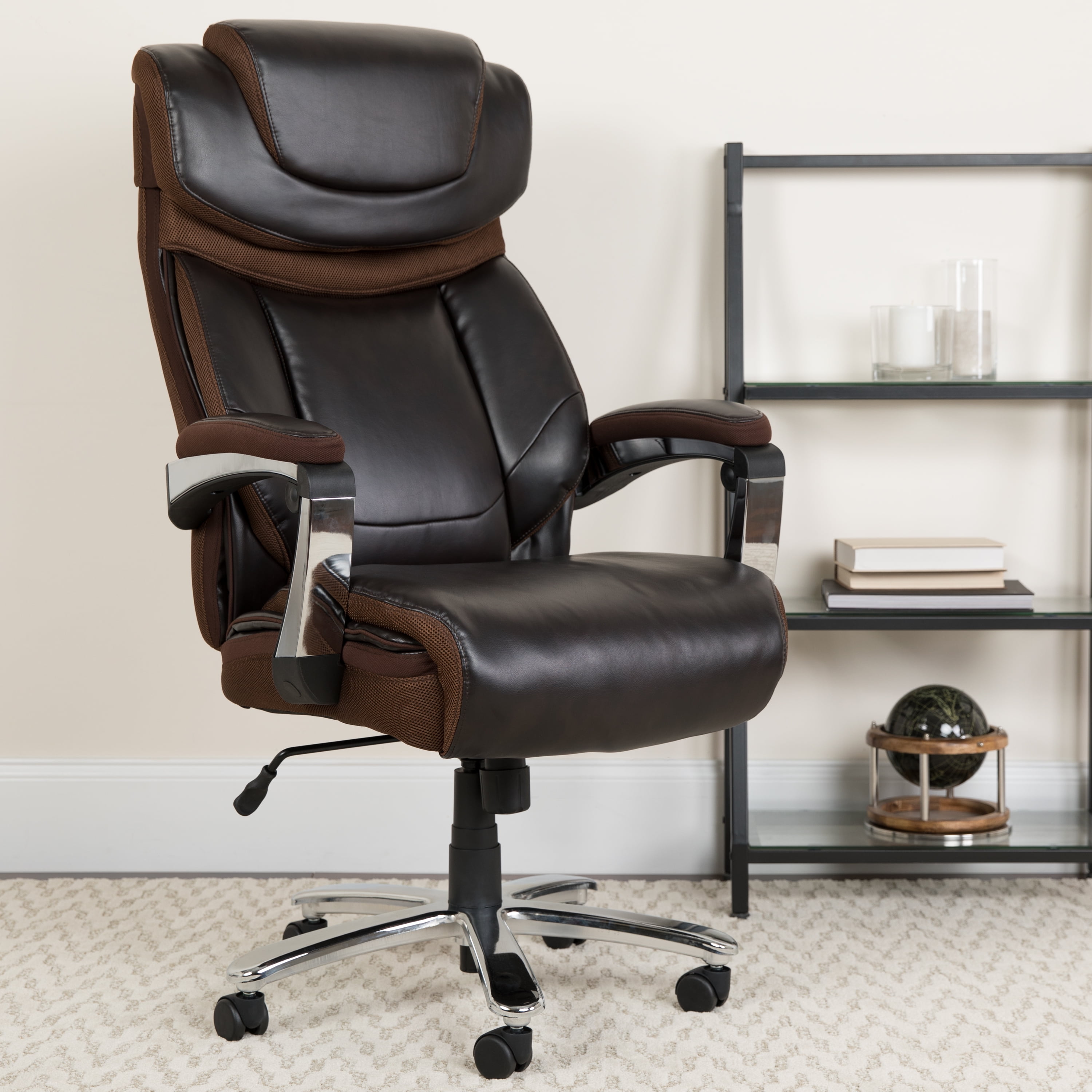Product Overview

Upholstered desk chairs with wheels represent a significant segment of the office chair market, catering to a wide range of needs and preferences. These chairs combine the comfort of upholstery with the mobility afforded by wheels, making them suitable for various work environments, from home offices to corporate settings. The selection available is extensive, offering diverse styles, materials, and ergonomic features to accommodate individual user requirements and budgets.
Styles and Materials of Upholstered Desk Chairs
The market offers a diverse range of upholstered desk chairs with wheels, each distinguished by its style, materials, and design features. Styles range from traditional executive chairs with high backs and rolled arms to contemporary designs featuring sleek lines and minimalist aesthetics. Materials used in upholstery vary significantly, impacting both the chair’s aesthetic appeal and its durability and comfort. Leather upholstery provides a luxurious feel and high durability, though it can be more expensive than other options. Fabric upholstery, available in a vast array of colors and textures, offers a softer feel and is generally more affordable. Mesh upholstery, increasingly popular for its breathability and ergonomic properties, is often chosen for its ability to promote airflow and prevent overheating during prolonged use. Design features such as adjustable height, lumbar support, and armrests contribute significantly to the overall comfort and ergonomics of the chair.
Ergonomic Benefits of Different Upholstered Desk Chair Designs
The ergonomic benefits of upholstered desk chairs are directly linked to their design features and the materials used. Proper lumbar support is crucial for maintaining the natural curvature of the spine and reducing back strain during prolonged sitting. Adjustable height allows users to customize the chair to their individual body dimensions, ensuring proper posture and minimizing discomfort. Chairs with adjustable armrests can further enhance comfort by supporting the forearms and reducing strain on the shoulders and neck. The breathability of the upholstery material is also an important ergonomic consideration, as it helps to regulate body temperature and prevent discomfort from overheating. Chairs with mesh backs, for instance, offer superior breathability compared to those with leather or thick fabric upholstery. The overall design of the chair, including its seat depth, seat width, and backrest angle, all contribute to its ergonomic efficacy.
Comparison of Upholstered Desk Chair Models
The following table compares four different upholstered desk chair models, highlighting key features, price range, and user reviews. Note that price ranges are approximate and can vary based on retailer and sales. User reviews are summarized and reflect general trends.
| Model | Key Features | Price Range | User Reviews Summary |
|---|---|---|---|
| Model A (e.g., Herman Miller Aeron) | Mesh back, adjustable height and arms, excellent lumbar support | $1000 – $1500 | Highly rated for comfort and ergonomics, but expensive. |
| Model B (e.g., Steelcase Leap) | Fabric upholstery, adjustable height and arms, good lumbar support | $800 – $1200 | Positive reviews for comfort and adjustability, considered a good value. |
| Model C (e.g., Haworth Fern) | Leather upholstery, adjustable height, basic lumbar support | $600 – $900 | Generally well-received, but lumbar support may not be sufficient for all users. |
| Model D (e.g., a budget-friendly brand) | Fabric upholstery, adjustable height, limited adjustability | $200 – $400 | Affordable, but may lack the ergonomic features of higher-end models. |
Buying Guide

Selecting the right upholstered desk chair is crucial for comfort, productivity, and long-term health. This guide provides a structured approach to choosing a chair that meets your specific needs and preferences, ensuring a positive and supportive seating experience. Careful consideration of several key factors will lead to a well-informed purchase.
Assessing Individual Needs and Preferences
Understanding your individual needs is paramount. This involves considering your body type, work style, and budget. For example, individuals with back problems will require chairs with superior lumbar support and adjustability. Those who spend long hours working will benefit from chairs offering excellent ergonomic features. Budgetary constraints will naturally influence the range of available options. A clear understanding of these factors will significantly narrow the field of potential choices.
Chair Adjustability: A Cornerstone of Ergonomic Design
Adjustability is a critical factor. A truly ergonomic chair allows for personalized adjustments to accommodate individual body sizes and postures. Key adjustable features include seat height, backrest height and angle, armrest height and width, and lumbar support. The ability to fine-tune these aspects ensures optimal posture and minimizes strain on the back, neck, and shoulders. Chairs lacking sufficient adjustability may lead to discomfort and potential long-term health issues. For example, a chair without adjustable lumbar support may not adequately support the natural curve of the spine, leading to back pain.
Durability and Material Considerations
The durability of an upholstered desk chair is directly related to its construction and materials. High-quality materials, such as durable fabrics and robust frames, will withstand daily use and prolonged periods of sitting. Consider the type of upholstery; leather is known for its longevity and easy cleaning, while fabric offers a wider range of textures and styles, but may require more frequent cleaning. The chair’s frame should be constructed from strong materials like steel or high-quality wood to ensure stability and longevity. Investing in a durable chair will minimize the need for frequent replacements and save money in the long run. For instance, a chair with a poorly constructed frame may break down after only a few months of use.
Maintenance and Cleaning, Upholstered desk chair with wheels
Regular maintenance is essential for preserving the chair’s appearance and extending its lifespan. The type of upholstery will dictate the appropriate cleaning methods. Leather chairs typically require occasional conditioning to maintain their suppleness and prevent cracking. Fabric chairs may require spot cleaning or professional cleaning depending on the material and the level of soiling. Regular dusting and vacuuming will help to remove dirt and debris. Proper maintenance ensures the chair remains aesthetically pleasing and hygienically sound. Ignoring maintenance can lead to premature wear and tear, reducing the chair’s lifespan and potentially creating a less hygienic work environment.
Decision-Making Flowchart
The following flowchart illustrates a systematic approach to selecting an upholstered desk chair:
[Descriptive Text of Flowchart]
Start –> Determine Budget –> Assess Ergonomic Needs (Back Support, Adjustability) –> Consider Style Preferences –> Evaluate Durability and Materials –> Choose Chair –> End
The flowchart visually represents the sequential decision-making process. First, the budget is determined, followed by an assessment of ergonomic requirements and style preferences. The evaluation of durability and materials concludes the process before the final chair selection is made. This systematic approach ensures a well-informed purchase decision.
Care and Maintenance: Upholstered Desk Chair With Wheels

Proper care and maintenance are crucial for extending the lifespan of your upholstered desk chair. Regular cleaning and attention to detail will prevent premature wear and tear, ensuring your chair remains comfortable and functional for years to come. This section details the specific care requirements for various upholstery materials and offers guidance on maintaining the chair’s structural components.
Cleaning and Maintaining Different Upholstery Materials
The cleaning method for your chair will depend entirely on the upholstery material. Leather, fabric, and microfiber each require a different approach to ensure both cleanliness and preservation of the material.
- Leather: Leather upholstery adds a touch of elegance and durability. Regular dusting with a soft cloth is essential to remove surface dust and debris. For more thorough cleaning, use a specialized leather cleaner and conditioner. Avoid harsh chemicals and excessive moisture, as these can damage the leather’s finish. Always test any cleaning product in an inconspicuous area first.
- Fabric: Fabric upholstery requires more frequent cleaning, depending on usage. Vacuuming regularly with a soft brush attachment removes loose dirt and dust. For spot cleaning, use a mild detergent solution and blot gently with a clean cloth. Avoid rubbing, as this can spread the stain. For tougher stains, consider professional upholstery cleaning.
- Microfiber: Microfiber is a popular choice due to its stain resistance and easy maintenance. Regular vacuuming is usually sufficient. For stubborn stains, a solution of water and mild detergent can be effective. Always test in an inconspicuous area first. Avoid harsh chemicals and excessive scrubbing.
Stain Removal Techniques
Prompt action is key to successful stain removal. The longer a stain sits, the harder it will be to remove. Always blot, never rub, and test any cleaning solution in an inconspicuous area before applying it to the entire stain. For specific stain types (e.g., ink, wine, grease), consult a professional cleaning guide or consider professional cleaning services. Remember to allow the upholstery to air dry completely after cleaning, avoiding direct sunlight or heat.
Maintaining the Chair’s Components
Regular maintenance extends beyond the upholstery. The chair’s base and wheels are critical for its functionality and longevity. Inspect the wheels regularly for any signs of wear or damage. Clean any debris that may accumulate around the wheel mechanisms. If the wheels become stiff or sticky, consider lubricating them with a silicone-based lubricant. The chair’s base should also be inspected for any looseness or damage. Tighten any loose screws or bolts as needed. Avoid overloading the chair beyond its weight capacity to prevent structural damage.
